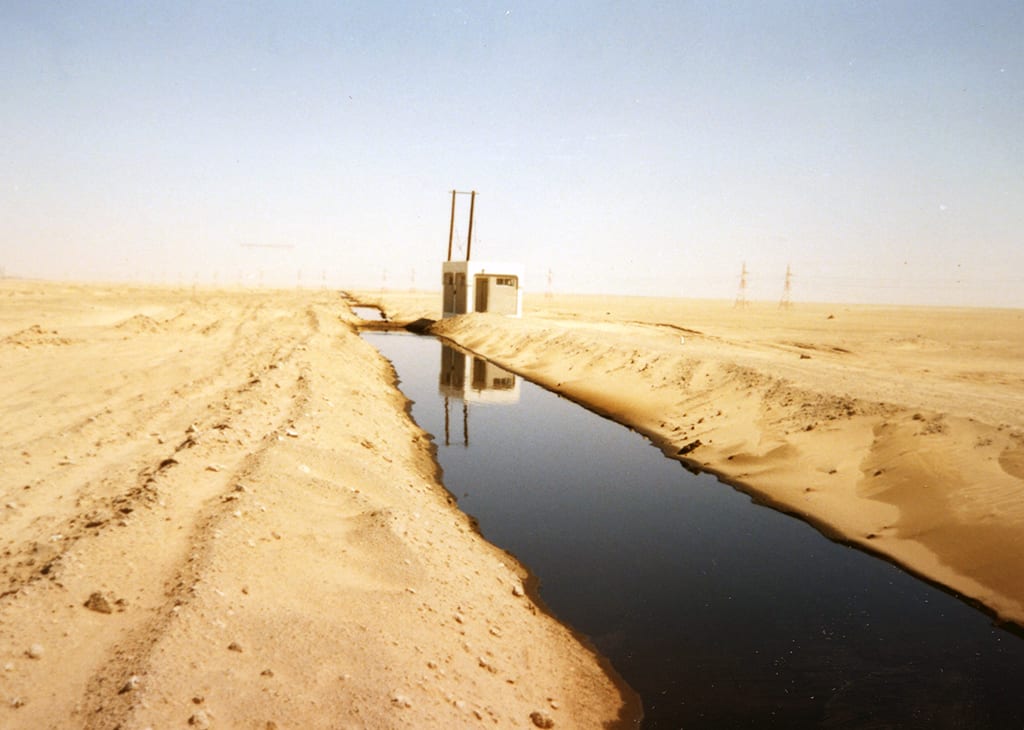PART II: "G-Day": The Beginning of the Ground Offensive
After over a month of the air campaign, with a final ultimatum for Iraqi forces to evacuate Kuwait expired, the ground campaign began. In Saudi Arabia, along the border with Iraq and Kuwait, the coalition forces rolled forward along the over 330 mile front.
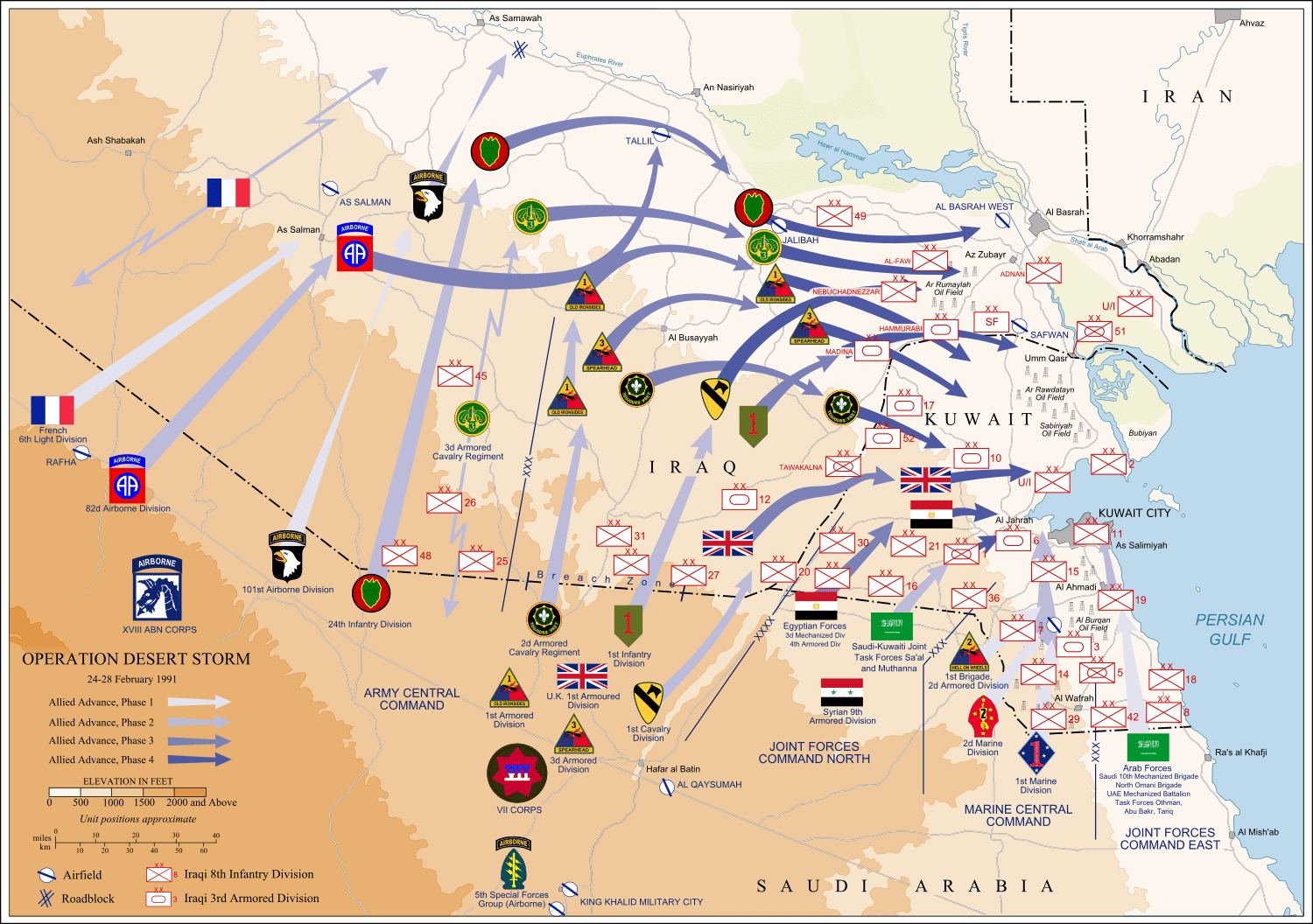
Helen Gurkow of the 13th Evac Hospital, remembered the opening phase of the ground war, and the reality that the armored units were staged behind the hospital units:
“We were told we would know when the ground war would start because we were under 7th Corp and that’s—well the 1st and 3rd Division, was going to come up and one go on either side of us and then right into Iraq. Of course we knew it was happening because of all of the haze in the sky [from all the tracked vehicles moving across the desert] and all of that. We knew they were on the move. I was on emergency room call for that twelve hour span.”
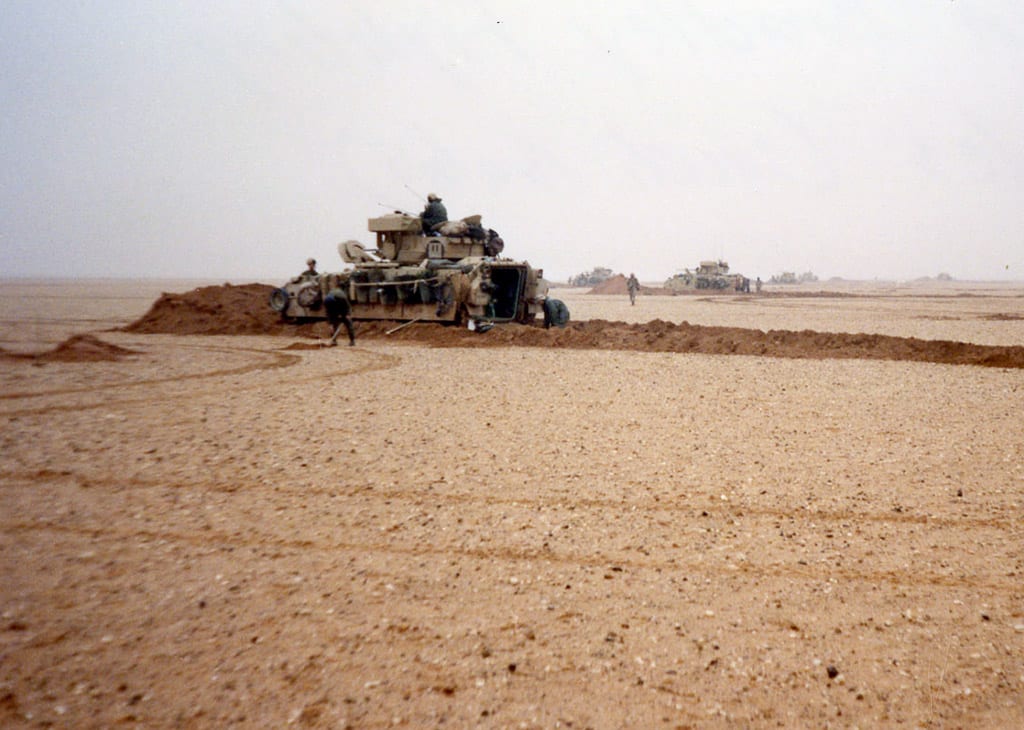
Bradleys from John Peters' unit in defensive "hull down" positions along the border prior to the ground assault.
On the first day of the offensive the main advance was supposed to be on either flank of the front with the center feinting a full attack. John Peters remembered that his unit, the 1st Cavalry Division, located in the center of the Coalition line and part of the main armored thrust, wasn’t supposed to truly press the advance until the following day.
“When the real ground assault started, our unit went straight up the valley called “Wadi al Batin” which is the same area we conducted the previous raids. While the 1st Cav was conducting this assault, the main allied thrust was to the north pushing into Iraq, with the object of flanking most of the Iraqi Republican Guard units that were positioned in southern Iraq. Our mission was to engage the Iraqi units in the Wadi while the main allied assault encircled them…"
During these initial advances across the border into Iraq and Kuwait on the two flanks of the line, the coalition forces overwhelmed the initial Iraqi defenses and encounter relatively weaker resistance than expected. On the right flank of the advance, many of the obstacles and emplacements just inside the Iraqi border were quickly bypassed or overtaken and the advance moved forward ahead of schedule. Jeffrey Coonjohn, of the 826th Ordnance Company out of Madison, passed over that same terrain on the right flank a few days after the initial advance and remembered seeing the ease at which some of the obstacles were overcome.
“We scanned the battlefield. In addition to the litter of personal combat gear, we could see gaping craters from the heavy pounding these soldiers had taken. Further down the road we came to the infamous “pits of oil” that were to be set ablaze in an attempt to stop the Coalition advance. The onslaught had been so fast, however, that the pits still remained full and unburned. Beyond the pits lay Iraq’s most dangerous weapon: mine fields… As the American combat engineers plowed through these lethal defenses, they had simply stacked the mines alongside the road. To the east and west of the breach, lay thousands more mines, still buried."
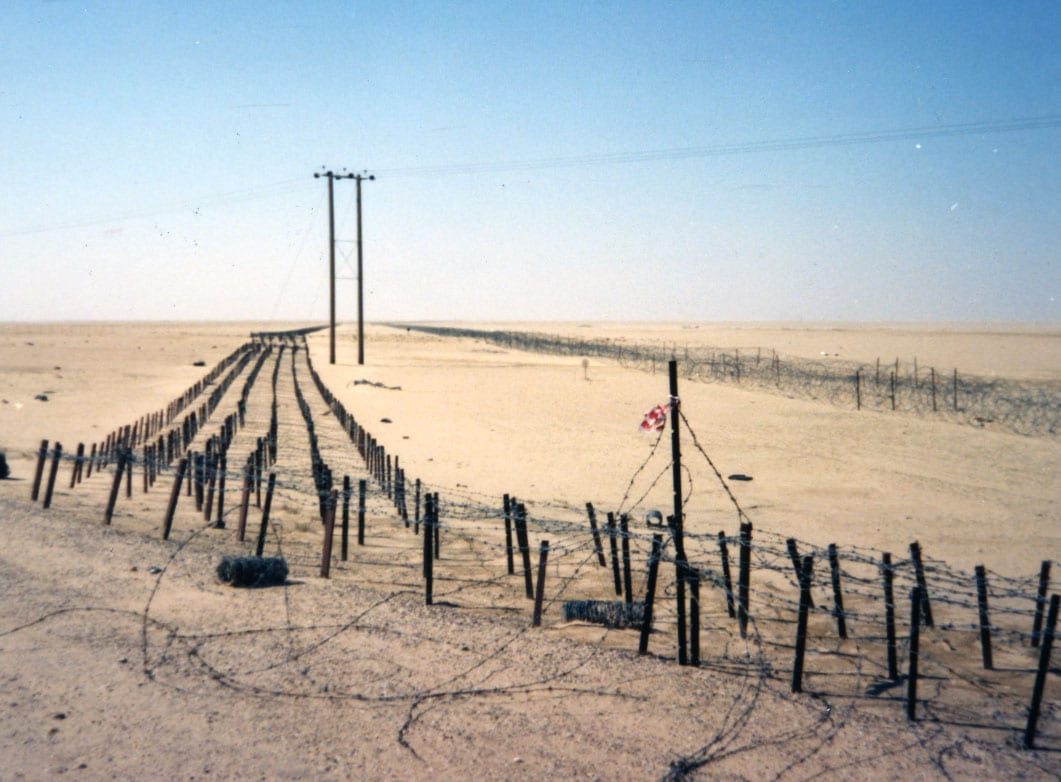
20ft wide stretches of tanglefoot left by Iraqi troops.
The Iraqi’s next line of defense consisted of twenty-foot wide stretches of tanglefoot: a type of barbed wire strung in a crisscrossed fashion about six inches above the ground. It was impossible to crawl under and very difficult to navigate on foot while under fire… Beyond the the tanglefoot, was stacked concertina wire extending along the border as far as the eye could see. Our combat engineers had cut through these defenses like an afternoon excise…"
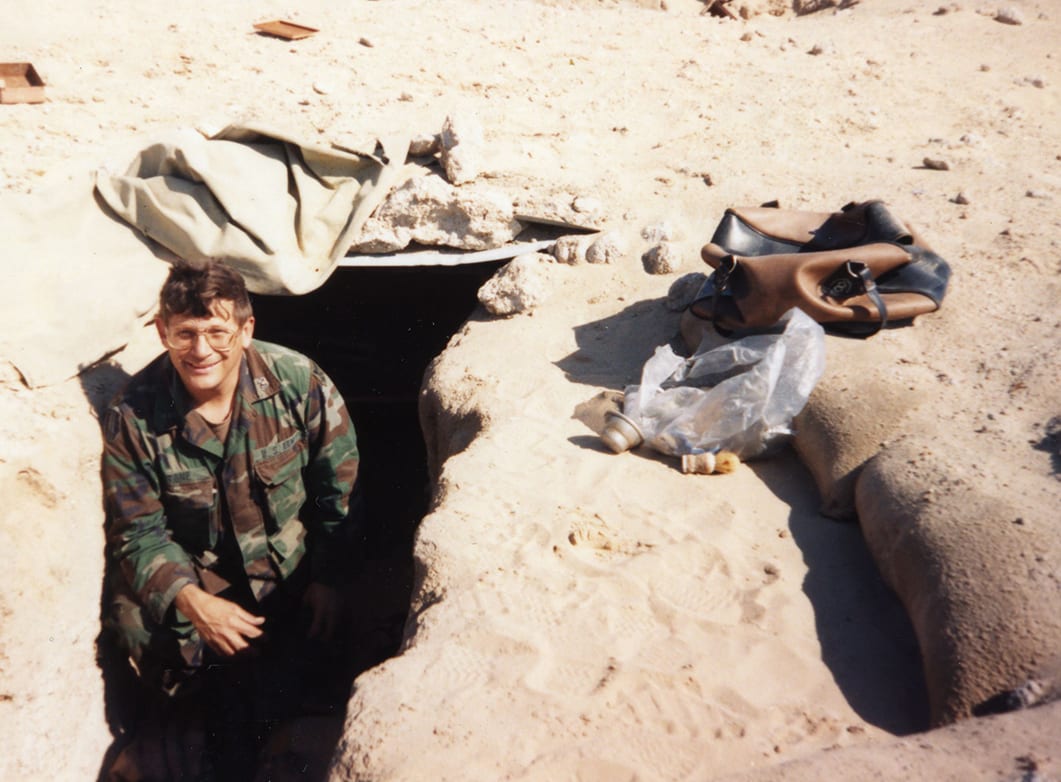
Trenches, approximately 24” deep, extended for miles.
"The Iraqi front line looked more like a scene from WWI. Trenches, approximately 24” deep, extended for miles, with fighting and sleeping positions placed every forty feet or so. The fighting positions were atrocious attempts at fortification. They consisted of a hole six by four feet by 18” deep – six inches higher than the trenches to keep water and rodents out. The hole was covered with corrugated tin and lightly sprinkled with sand… One thing was clear: the Iraqis had vacated in haste, either surrendering or running northward.”
By mid-afternoon, because the right flank advance was ahead of schedule and in danger of being isolated from the rest of the Coalition line, the advance in the other parts of the line were moved up in the time schedule. John Morgan serving with a MLRS [Multiple Launch Rocket System] artillery unit with the 18th Airborne Corps on the left flank, remembered some of the confusion and the quick shuffling they had to do to catch up with the main line that night.
“The plan was to move two clicks from the border, wait for orders, wait for the main invasion to go, ‘cause I was part of the spearhead that went up and around the country… So what happened is I went back for a Humvee we’d left at maintenance battalion to get fixed, came back to where they were supposed to be and they were gone because the front wave moved so quickly they moved the timeframe up twelve hours from when we were supposed to leave. We were back on time but everyone else was gone. We knew which direction they went and where the LD was. Line of Departure, across the border. We knew where that was so we just went there and they were just, it was really strange, it was the middle of the night and there was a big sign “Welcome to Hell” or something. IT was just kind of funny. Then the engineers had, there was berms and the engineers had plowed through the berms and there was lights. There was just a ton of units flowing through here… Eventually we ran into somebody who had seen our unit and we just kept tagging and tagging for about two more days to catch them.”
As the first day of the offensive closed, units were still on the move to catch up with each other and maintain contact if at all possible, pockets of resistance were met and overcome, and preparations were made for a massive flanking attack the following day.


